

Three stories from St. Louis highlight different ways to combat urban blight, from fighting decay on Martin Luther King Jr. Drive to turning vacant lots into lush corner gardens. Whether it’s one street, one garden, or one tree, it gets easier to imagine change when you literally see it take root.
Download episode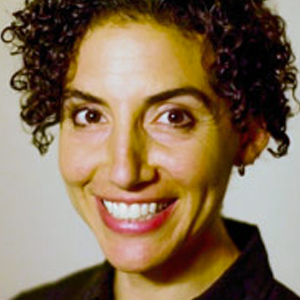
Rebecca Sheir has been a host and reporter on All Things Considered, Morning Edition, Marketplace, Here and Now, The Splendid Table, and the Alaska Public Radio Network. Follow her on Twitter.
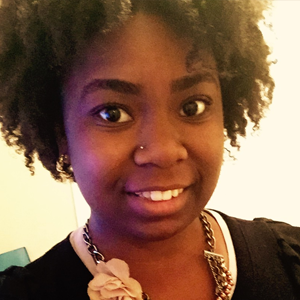
Kameel Stanley co-hosts the podcast We Live Here, a production of St. Louis Public Radio, where she reports on issues of race, class, power, and poverty. Previously, she worked for several years as a public safety and city hall beat reporter for the Tampa Bay Times in Florida.

Tim Lloyd also co-hosts the podcast We Live Here. The winner of several national journalism awards, he holds a master’s degree in journalism from the University of Missouri.
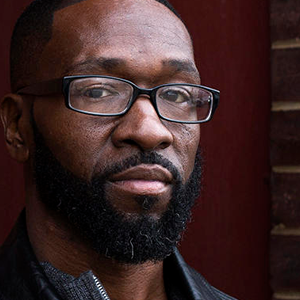
Melvin White founded Beloved Streets of America in an effort to revitalize St. Louis’ Martin Luther King Drive, along with other similarly named streets across the country.
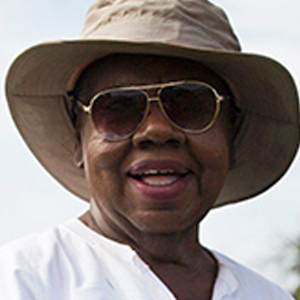
Rosie Willis founded St. Louis’ Fresh Starts Community Garden in 2009 to provide a food source and gathering spot for residents.
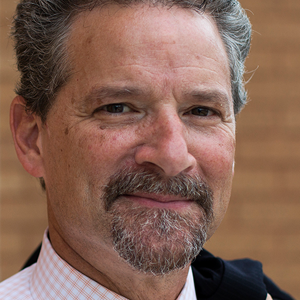
Chris Krehmeyer is president and CEO of Beyond Housing, an affordable housing and community development nonprofit that serves the St. Louis region.
Rebecca Sheir: It’s 7 o’clock in the morning and most people in St. Louis, Missouri, are starting their day. But Melvin White, he’s just getting off work. His eyes are heavy as he clutches a cup of coffee.
Melvin White: Good morning.
Sheir: Melvin is a clerk at the post office downtown. He’s worked there for 20 years. For the past six, he’s pulled the graveyard shift. But not because Melvin’s a natural night owl. No. Working nights allows him to devote his days to his real passion.
White: Give me a couple hours rest and then I’ll do my beloved streets you know get started on my community work.
Sheir: “Community work” is an understatement. Melvin has a big, bold plan to transform a part of the city where he grew up, along Martin Luther King Drive in north St. Louis. Like many streets named after the civil rights leader, it runs through a mostly black part of town that’s suffered through decades of disinvestment. Actually, a lot of St. Louis looks this way: a bit disheveled, a bit neglected. Call it blight, or hard times. But Melvin is among many in the city who say they’re tired of looking at ugly streets, vacant lots, and grimy sidewalks. They say changing these things can make a huge difference, even if they’re not the underlying causes of poverty and neglect.
I’m Rebecca Sheir and from Slate magazine, this is Placemakers—stories about the spaces we inhabit and the people who shape them. Today we’re bringing you three different stories, all from St. Louis, and all about people who are taking on the challenge of urban blight. Now, in a sprawling place like St. Louis, solving the interlocking problems that create blight is a huge undertaking. But that doesn’t deter Melvin White.
White: Excuse the building, it needs a lot of work.
Sheir: Melvin’s at the headquarters of the nonprofit he started a few years ago. It’s called Beloved Streets of America, and admittedly, it’s not much to look at. The ceiling is full of holes. Paint is peeling off the walls. The back of the building is starting to fall down. But Melvin sees past all of that, to the promise behind the name of the street outside: Martin Luther King Drive.
White: Right now as you can look around these abandoned buildings and boarded up buildings and that’s not what Dr. King stood for he stood for beauty. I mean this man did a lot to help with civil rights race relations and to be represented in the negative aspects that we’re looking at, it’ s not fitting for a man who gave his life to uplift communities across the country. So we have to get that face lift. In order to represent what he stood for.
Sheir: Melvin’s dream is to start that “face lift” by transforming the vacant lot across the street into a park. He also wants to see a monument to honor Dr. King and black luminaries from St. Louis. And he wants to revitalize the building he’s standing in, and others around it. The price tag for all of this, he says, would be $2 million dollars. But it would cost $1 billion dollars to achieve his ultimate goal: cleaning up MLK streets and avenues across the country.
This ambitious idea has gotten Melvin a lot of headlines. But not a lot of cash. In fact, to save money, about a year ago, he cut off the electricity to his office. Still, he’s not giving up. And a few weeks after our producers first meet Melvin, he and some volunteers are back at the nonprofit’s headquarters. Melvin sometimes organizes crews of volunteers to sweep away broken glass and hypodermic needles in the area.
White: We’re trying to bring back Dr. King’s legacy in a positive light by cleaning the streets up. Bringing jobs back to social programs and people trying to get off drugs and so forth. So we just need your support. You see us out there grab a broom and help us clean up you know. That’s what we do. You know that’s what I mean.
Woman: Thank y’all for coming. Ain’t many people that do that. Thank you for your time.
Sheir: Melvin says moments like these keep him going.
White: Like I said, our thing is it’s not a black thing; it’s the right thing. And that’s the movement that we’re pushing right now.
Sheir: But creating a true anti-blight “movement,” and actually getting it to move forward, that’s easier said than done. People in community development say it can take years to bring any kind of visible, lasting change to a struggling neighborhood. Fortunately, not far from Melvin’s boulevard, other activists in St. Louis are seeing the fruits of their struggles. Quite literally.
Reporter Kameel Stanley introduces us to one woman who wouldn’t let a lack of money—or an abundance of red tape—stop her from reinventing her little piece of the city.
Kameel Stanley: You really can’t prepare for the sight of the Fresh Starts Community Garden in the Jeff-Vander-Lou neighborhood of north St. Louis. It’s nestled on a dead-end street, in a neighborhood that is dotted with abandoned brick homes that once must have been stately. Though just a couple miles from the center of St. Louis, it couldn’t feel farther from downtown’s high rises and boutique shops. The nearest grocery store is a 17 minute walk away from here.
In the 1800s, the city designated this neighborhood as a strictly “negro” district. It was one of the few areas of town where blacks were allowed to own real estate. Today, Jeff-Vander-Lou remains almost entirely black, and 60 percent of the people in this ZIP code live below the poverty line.
But pull up to this block, and you see an acre of green. I’m looking for a woman named Rosie Willis, who runs the garden. People all over the city speak of her like a legend. But instead of Willis, I see this: three ladies, crouched beside what appeared to be an overgrown vine, using an old pair of pantyhose to support a gourd-shaped vegetable I’ve never seen in my life.
Stanley: What is that?
Ladies: It’s called cushaw.
Stanley: A what?
Ladies: A cushaw squash. Cushaw. It’s similar to like pumpkin and stuff, but I think it’s a little sweeter. I think it is between like a pumpkin and a summer squash probably or a sweet potato. Yeah. And you can make pies out of it and breads out of it. But most people make pies.
Stanley: Sarah Humphries says she’d never gardened, until three years ago.
Sarah Humphries: Never. And I thought I had no kind of green thumb because I’ve killed every house plant I have ever had in my apartment. But Rosie just taught me the basics, and I’ve just been go in and learn from them. And these ladies this is their first season and they’re as pro as me.
Stanley: Humphries and her friends Debbie and Julie, now spend Monday, Wednesday, and Friday mornings growing, harvesting, and weeding this place.
Humphries: It’s honestly a treasure of the neighborhood.
Stanley: But, Humphries says in order to really appreciate what’s here now, you have to know what this place used to look like.
Humphries: When she took over, this was an empty lot. If you can see right there—which I know your podcast people can’t see—but it’s an abandoned building, which is losing the back half. That was basically the same here. When we dig, there’s still foundations from houses we find. Like, we have to pick up bricks and shit—I’m sorry—under the dirt. So it was—there is no real vegetation. There was no fence. There were no sidewalks. There was no shed. There were no water sources. We used to have to hook a hose up from Rosie’s house and try to drag it over to water or fill up buckets to water like it was basically barren and nothing.
Stanley: She inspires you guys, I can’t wait to meet her.
Humphries: She does. You’ll see when you meet her.
Stanley: I take her advice and come back two days later to meet the lady everyone here has been gushing about, Rosie Willis. She’s lived in Jeff-Vander-Lou for 47 years.
Rosie Willis: Well, come right in, and you know where you can start because you’ve been here before. Yes, we have.
Stanley: Willis gets straight to her favorite thing: showing off the various fruits, veggies, flowers, and plants growing here,
Willis: Have you ever seen climbing spinach? No. Look at that! Isn’t it incredible, Debbie?
Stanley: Willis grew up with gardens, usually planting small ones in her own yard. In 2009, after closing her home day care business, she found herself with a lot more free time. She thought of joining an already established community garden in a different part of St. Louis. But then she looked around.
Willis: I was coming down my back porch and I thought, why am I going to go to another garden that’s already beautiful. When we got all this mess around us? These old lots. With all kinds of trash and drug paraphernalia anything you want to name multiplied about a hundred times on these lots OK.
Stanley: One of those empty, trashy lots was steps away from Willis’ back porch.
Willis: So I want to see what can we do about this piece of land over here.
Stanley: Turns out, the city owned the land. Willis convinced officials to lease the vacant lot for $1 a year—as long as she followed through on her plan to start a garden The neighbors were on board. But Willis knew she needed money to get it started. Remember, there were no water lines for irrigation, no fence to keep the place secure, no shed for tools.
Willis: Then I started on my alderwoman—we had a great alderwoman then—about asking for, we’re trying to have this garden, we need some money. And she’s said, Well, Rosie, I don’t know. We don’t have money for a project like that. Every time I asked her a question it was I don’t know, I’ll look into that OK.
Stanley: Willis finally started to get some results after meeting a college student who drew up plans for what the garden could look like. That, finally, got city people out to the vacant lot.
Willis: They came out. They had a high heel shoes on, walking around out here in the dirt. In their little suits. And I was looking like somebody’s scarecrow. So one of the ladies said, Well, I think we can give you a three-sided fence.
Stanley: Willis wasn’t interested in that. Instead, she got the industrial shed she pushed for. It’s full of really nice tools. And it’s a couple feet away from a pergola and a picnic table. A couple high school kids put a roof on the structure so gardeners have shade from the sun. Sarah Humphries, the volunteer who spends most mornings in the garden, says it’s obvious Willis’ simple pledge to start a garden has grown into something much more.
Willis: Everybody that walks by, everybody from young kids to old people, waves at us ask us what we’re harvesting today, ask how Rosie is. Yell hello. People respect even if they’re not in here gardening. The young kids that are doing other stuff around here and playing basketball will get defensive if people try to like disrespect or encroach on the garden like it’s just known. We love Rosie. We love this garden. It’s part of our neighborhood and whether we’re actually there helping or not. Everybody. Looks out for it.
Stanley: Humphries is not exaggerating. Everyone who comes to the garden is riveted. By its size, it’s nearly an acre and has room for 50 beds. That’s five times bigger than the average community garden tracked by Gateway Greening, an urban agriculture organization here in St. Louis. And its impact: Hundreds of pounds of fresh vegetables, fruits and herbs are harvested each year. And, lastly, it’s community. Willis only charges people $20 a year to rent space in the garden. She refuses to raise the price, in part so people in the neighborhood, can afford to garden. She says she wants to show people they don’t always have to look elsewhere for progress.
Willis: You don’t have to run a hundred miles away from anything because you think you’re going to what is better. Move in an area like this and make better. So that’s why I’m here.
Stanley: It’s also why others are drawn to Fresh Starts, which was just named the best hangout garden by the city’s largest urban agriculture nonprofit, Gateway Greening. Because seven years after deciding to transform the vacant lot across the street, Rosie Willis doesn’t have a problem convincing people of the garden’s worth. These days, city officials flock to the garden, as they did recently for an annual candlelight dinner Willis hosts. She made sure everyone got a plate, piled high with food harvested from Fresh Starts. And as many times as Willis took to the microphone and thanked volunteers, they in turn heaped praise right back.
Sal Martinez: Rosie Willis is a force of nature. She’s a dynamo.
Stanley: Sal Martinez helps Willis run the garden. In fact, his company, Community Renewal and Development, wrote the grant that resulted in the garden’s Port-a-Potty.
Martinez: She wowed me with her passion and commitment to growing this garden and doing something to address the fact that Jeff-Vander-Lou is a food desert. And so she convinced me right away because she’s willing to put in the work. She probably worked 50-plus hours a week in the garden and on the weekend.
Stanley: Fresh Starts has bloomed into more than just a food source for Rosie’s neighborhood. A teen girl who lives a few blocks away works part time here. Police officers, firefighters, and other government officials use the garden as a neutral meeting spot to connect with residents. People from all over the city sign up for plots. Martinez, who’s been trying to improve Jeff-Vander-Lou for more than a decade, calls Fresh Starts a major part of the neighborhood’s redevelopment.
Martinez: This garden is really an oasis in an urban community that unfortunately has had to survive for decades of disinvestment. But this garden is a symbol of what this community could and should be and what it will be again.
Stanley: Meanwhile Willis says she’s not done, and has her eyes on another plot. The one right next to the garden. She believes the crumbling vacant house that sits there now could be renovated. Then something useful could go inside. A commercial kitchen. A community meeting room. A museum. And just like she did with the garden, Willis says she’s planting that seed of an idea with city officials right now.
Sheir: St. Louis is full of people like Rosie Willis. People who see a problem, as an opportunity for change. But those good intentions can crumble under the weight of a divided region. Because St. Louis is more than one municipality. It’s dozens of them, some tinier than the Jeff-Vander-Lou neighborhood itself. And, as we’ll hear after the break, fighting blight in those places takes real ingenuity, and maybe even a chainsaw or two.
Sheir: From Slate magazine, it’s Placemakers. I’m Rebecca Sheir. If you were to unfold a big map of St. Louis County, you’d see what looks like a giant jigsaw puzzle. That’s because this single county of 1 million people contains almost 90 municipalities. Most of these little governments were formed between 1930 and 1950. Back then, if you lived in Missouri and wanted to make your own town, basically all you had to do was fill out some paperwork and send it in to the state. Ultimately, the laws were changed, but you can still see the results of that fractured system everywhere. And it’s faced harsh scrutiny of late.
Critics say St. Louis County’s patchwork of municipal police departments and courts can be detrimental to black and poor residents. For instance, black motorists are far more likely to be stopped and ticketed by municipal police departments. And if you can’t pay a ticket, a warrant can be issued. This pattern gets repeated over and over again across many of the county’s 81 municipal courts, getting residents stuck with multiple fines or legal battles.
Eric Schmitt: It gets to the root of this idea that local government is viewing its residents as nothing more than ATMs.
Sheir: Republican state Sen. Eric Schmitt has sponsored legislation that limits how much money municipal courts can collect from traffic fines.
Schmitt: So something has gone really wrong in the way we view local government.
Sheir: The patchwork of tiny governments is especially patchy in north St. Louis County. And decades of white flight and disappearing jobs have left many of these tiny suburbs struggling to make ends meet. Some of these towns have as few as 3,000 people. And they lack sufficient resources to tackle blight. Reporter Tim Lloyd brings us the story of one organization that’s trying to put St. Louis’s jigsaw back together, one tree at a time.
Lloyd: Many people have had big ideas about how to make all of St. Louis County’s tiny governments work together. The housing recession of 2008 hit this part of the county hard, and it’s made the need for coordination all the more urgent. And getting a blueprint for that has been tough. But Chris Krehmeyer has actually started building one. I meet up with him in a north county parking lot. Krehmeyer is a middle-aged guy with a gray goatee wearing a suit and tie. And lots of folks around here know Krehmeyer through his work, running an affordable housing and community development nonprofit called Beyond Housing.
Krehmeyer: For us, yeah it’s the physical place you live every day, but it’s really about the life in around where you live that we think fuels and draws the best out of the people that live there.
Lloyd: Beyond Housing has been around since 1975, but six years ago the housing crisis of prompted it to launch something called 24:1. It’s an association of 24 separate municipalities in north St. Louis County that pool their resources, in an effort to stave off decades of disinvestment. Collectively they represent about 36,000 residents across 11 square miles. Towns like the Village of Glen Echo Park, Pagedale, Normandy, Velda City, and Northwoods. And their first big accomplishment wasn’t a new building or a sweeping economic program. It was getting a better deal on something wealthier communities often take for granted.
Krehmeyer: Rock salt. As inane as that seems well, who knew that there was a Chesterfield co-op that got rock salt off the Missouri River that most affluent communities knew about but most low income communities didn’t?
Lloyd: Krehmeyer says getting people to work together to solve that small, practical problem had a domino effect. From there he brought in some bankers to meet with municipal leaders. Deals started falling into place. They developed and run a new grocery store, affordable apartments for seniors, even a movie theater. But the tiny towns of north St. Louis County need more than new development. They face another problem you might not expect: trees.
Krehmeyer: 24:1 now has it. Has its own forester.
Lloyd: Really?
Krehmeyer: Which seems a little odd.
Lloyd: And I have to admit I was surprised when Krehmeyer brought this up. An affordable housing nonprofit hiring a forester—really?
Krehmeyer: But here’s the deal. This is an older community with lots of older mature trees. So as a general rule most communities who don’t have a lot of resources view trees as a liability right? Because the only time they deal with them is when they fall. I never even thought of mature healthy trees save your pavement because the shielding from the heat of the sun they’re good for the sewer system because they’re taking a lot of water out of the sewer system so there’s great financial benefits for communities that have strong healthy trees.
Lloyd: A couple of years ago a consulting company tallied up all the benefits of public trees for about half of the little towns Chris works with—and put the value at more than $7 million. But again, this isn’t a wealthy area and a lot of these little towns don’t have much money to take care of these aging trees. So Beyond Housing applied for a grant to the Missouri Department of Conservation and got one last year to hire this guy.
Doug Seely: We need to figure out where we’re going to get the most bang for the buck. And what is most important, most critical at this point in time.
Lloyd: Doug Seely, an easy going guy with a stocky build, is Beyond Housing’s new community forester. He spends his days searching for, and documenting, the sickest trees in the area. Like this one, which looks like it could fall on top of the warehouse we’re standing next to.
Seely: After looking at the tree you can see there’s some brown leaves on it. So the tree was still alive this spring and it leafed out. And what happens is, with it being an American elm, it’s probably succumbed to Dutch elm disease.
Lloyd: Doug says some problem trees like this one are easy to spot. But most are hidden. A couple of streets over, he leans down and pulls back some ivy at the base of a different tree.
Seely: You can see that the ivy is hiding a huge cavity in the base of the tree. This tree should be removed. We should have never spent the money on pruning this tree.
Lloyd: Did you catch that part about pruning? Two years ago a few towns around here did get some tree work done. Which sounds good, but not all of the work was done correctly. So when something like a thunderstorm hits, those trees are more likely to fall down, destroy property. Then there’s all the extra money already-cash strapped towns have to spend to remove fallen trees. That, in turn, means there’s less money to plant new trees. Bottom line, it’s a mess that Doug, a certified arborist, now has to clean up. And his attention to detail has earned him a growing fan club among local officials like Mary Louise Carter.
Mary Louise Carter: And I think I’ve been pestering you more than anybody!
Seely: I wouldn’t call it pestering.
Carter: A little bit. I don’t even know when a tree is dead. A tree can be leafing and be gone.
Lloyd: Carter, a gregarious older woman, is the mayor of Pagedale. It’s a tiny city with around 3,300 residents. There’s not a lot of money in Pagedale, and Carter’s budget is tight. So having someone with Doug’s credentials, whose salary she doesn’t have to worry about, is a big deal.
Carter: And this is something we have never had in our area. We’re constantly cutting, we’ve got one to cut down now. And if you’re constantly cutting and never replant your city is going to be bare after a while.
Lloyd: A local forestry nonprofit has offered to donate trees, and now Doug is walking Carter through her options. She says this kind of thing hasn’t happened around here for a long, long time.
Lloyd: What do you hear from other mayors?
Carter: Everybody wants to plant! We’ve never had any concentrated planting around. I haven’t planted any in the last 15–20 years. But I’ve been constantly cutting them down as they die. So this is going to mean a lot for the entire area. So when you get to planting you’ll begin to see the impact of it over a wide area.
Lloyd: So far so good. Some small governments spot a problem, come together, get some money, and begin working toward a solution. But not so fast. Doug’s about to hit a snag. Because now that he’s catalogued all the problems all the problems left over from bad tree work done in the past, he has to deliver some bad news.
Seely: Just kind of going by the pre-bids we got, and the bidding that was done, kind of came up with the $11,112 to do all the removals and the prunings.
Irvetta Williams: And this is just to fix the trees?
Seely: Correct.
Lloyd: Doug is talking with his boss, Irvetta Williams, the manager of government affairs at Beyond Housing. He’s estimated what it will cost to do the work in just three of the 24 cities.
Williams: No. That’s, we’ve got other municipalities and we have dollars we need to stretch. Let’s stretch them some more.
Lloyd: In other words, Doug wants to spend about 1 in 3 dollars they have for the entire year to fix just a handful of trees. Not the most appealing option considering they have thousands and thousands of other trees that need attention. So, like Williams asked him to, Doug goes back the drawing board and gets creative. And about a week later, I meet back up with him. Doug wants to show me a tiny victory.
Seely: We’re looking to see if the stump was totally removed of that Elm tree that they removed a couple weeks ago.
Lloyd: We walk toward a pile of mulch. This is what’s left of the very first problem tree Doug showed to us. It’s the one that looked like it was going to fall on a warehouse. But working with the city and a property owner, Seely was able to cobble together the money needed to cut it down. Now he’s thinking about what kind of tree he can plant in its place.
Seely: So it’s about all those little bitty steps and things that we can do as a group to try and solve our overall problem of where are we going to get the money from.
Lloyd: One at a time.
Seely: One a time. That’s right. You can’t build Rome overnight.
Lloyd: No, you can’t build Rome overnight. But if Rome starts looking like it’s taking shape—if things start looking like progress? That gives people tangible hope, a sign that changing habits could be worth the sacrifice. That’s the real mission behind Beyond Housing’s focus on the seemingly minor issue of sick trees. Which takes us back to Chris Krehmeyer.
Krehmeyer: We allege that the context of this being possible is the last five six years of people being together talking together sitting on the common table saying wow I know the mayor from next door and I like him and I see he works hard and he cares about his community. So this makes sense and this is possible.
Lloyd: By “this is possible,” Krehmeyer means laying the groundwork for possible mergers between municipalities or combining police departments. And in October it was announced they had a deal in place that’s expected to merge seven municipal courts. By working together on the little things, Krehmeyer says people start to imagine bigger solutions.
Krehmeyer: Look, so much of this work is three yards and a cloud of dust right. We do fancy ribbon cuttings for big buildings, which is great right? But at the end of the day it’s about building relationships I mean the language we use is community building happens at the speed of trust. And trust is not given it’s earned every day every day every day.
Sheir: And this work hasn’t gone unnoticed. Earlier this year, the Robert Wood Johnson Foundation singled out what Chris Krehmeyer and his partners are doing as a model for community redevelopment. The foundation praised city leaders for setting aside individual agendas to improve the collective health of their residents and communities.
Like so many cities, St. Louis is grappling with a lot of issues: racial and economic divides, outdated systems of government, the legacy of bad policy decisions, and amidst all of that, fighting urban blight might not seem like such a high priority.
But then you have people like Melvin White, who believes revitalizing a street named after a civil rights icon will jump-start a struggling neighborhood’s redevelopment, and people like Rosie Willis, who transformed a vacant lot into a lush corner garden that helps feed her city, and you have organizations like Beyond Housing, who are trying to help tiny communities in St. Louis band together to protect an unexpected asset: trees.
What all of them realize is, whether it’s one street, one garden, or even one tree, it gets easier to imagine the possibility of change, when you see it begin, to take root.
Our stories today were reported by Kameel Stanley and Tim Lloyd. They co-host a great podcast called We Live Here, where they report on issues of race, class, power and poverty. It’s a production of St. Louis Public Radio. You can find a link on our website, Slate.com/placemakers.
Placemakers is a production of Slate magazine and is produced by Mia Lobel, Dianna Douglas, and Michael Vuolo, and edited by Julia Barton. Our researcher is Matthew Schwartz. Eric Shimelonis does our mixing and musical scoring. Our theme was composed by Robin Hilton. Steve Lickteig is our executive producer. I’m Rebecca Sheir.
For more information about today’s show and other episodes of Placemakers, go to Slate.com/placemakers. You can drop us a line at placemakers@slate.com. You can follow us on Twitter: our handle is @SlatePlacemaker. And if you like what you’re hearing, please give us a review or rating on iTunes. It really does help.
Coming up next time on Placemakers:
He’s been called “the world’s most outspoken critic of suburban sprawl.” And he has a lot to say about the parking lots, strip malls, and mega-malls that have sprouted up around the United States:
James Howard Kunstler: I like to refer to suburbia these days as “the greatest misallocation of resources in the history of the world.” That tells you a lot about its very essence.
James Howard Kunstler on how we can cure our car-crazed lifestyle and create buildings, and cities, that are “worth caring about.”